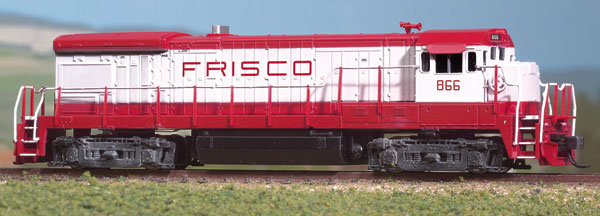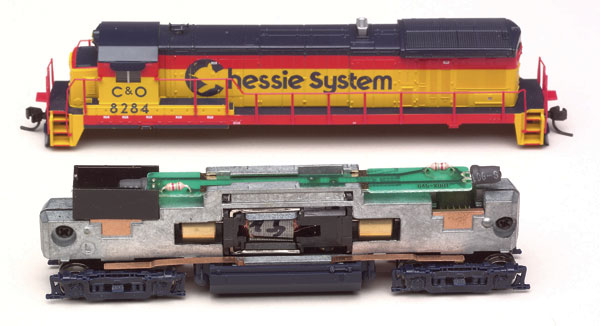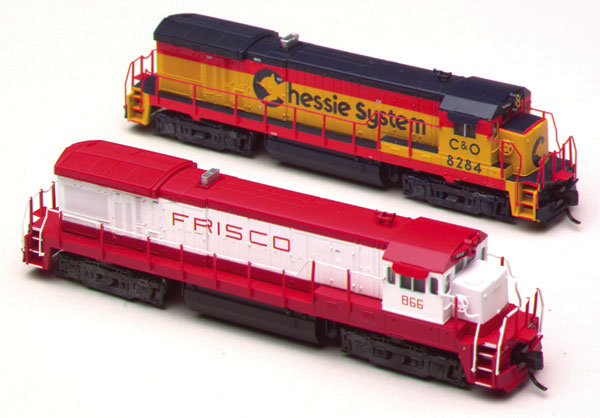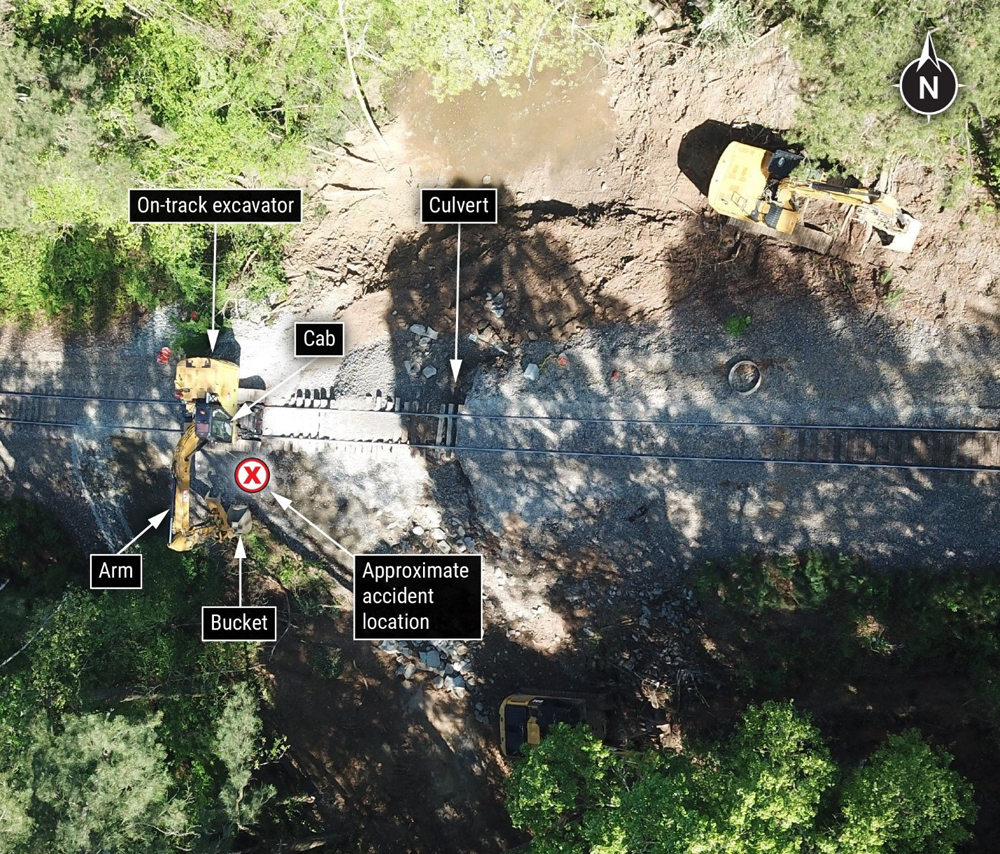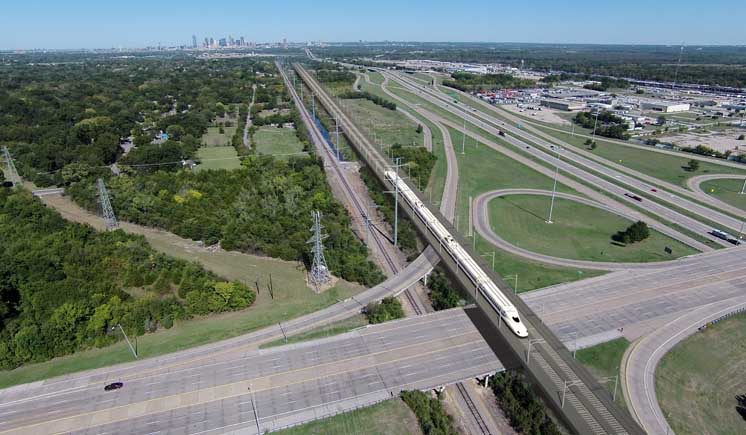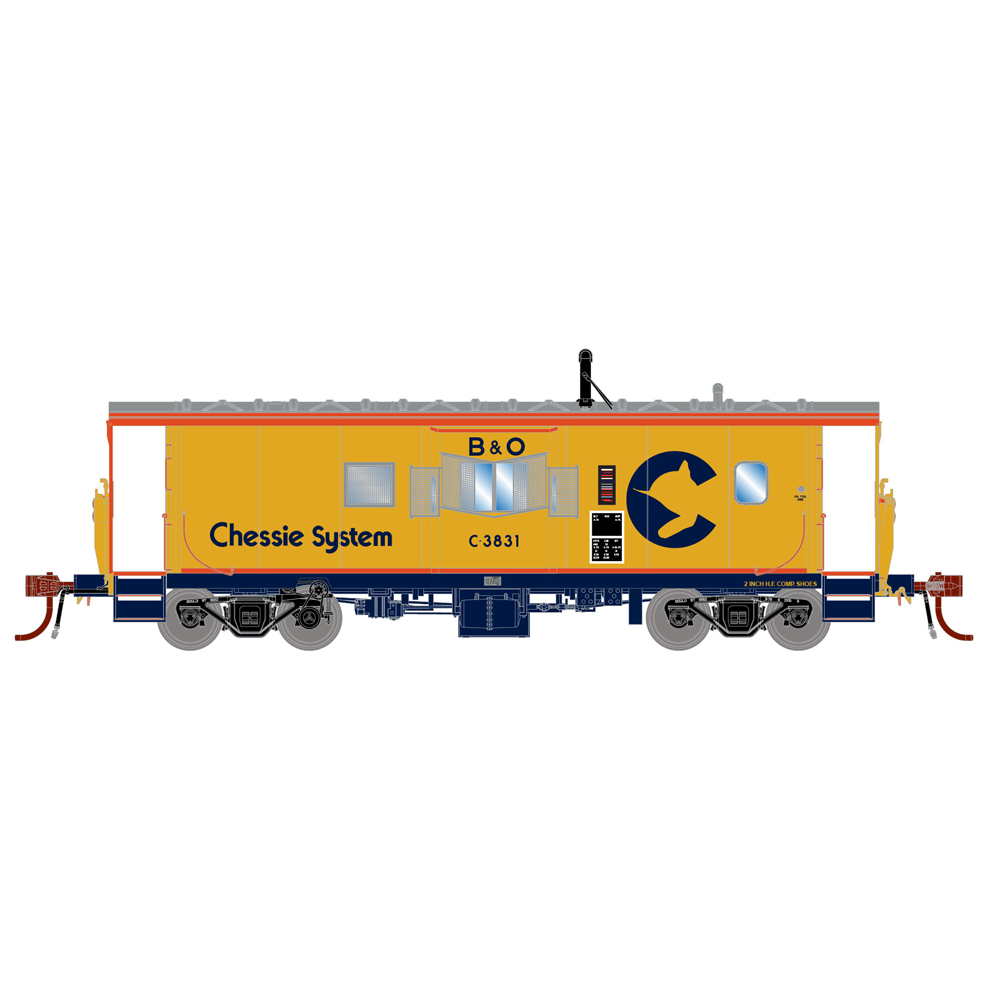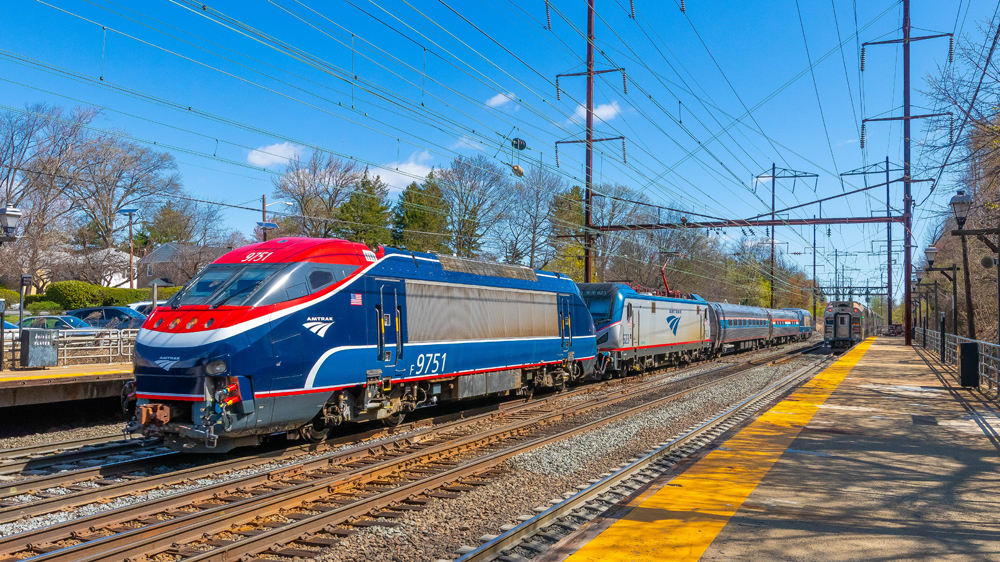Owners of B30-7s included Burlington Northern, which acquired eight via the 1980 merger with the St. Louis-San Francisco (Frisco), Chessie System (64), Seaboard Coast Line (17), Southern Pacific (84), and SP subsidiary St. Louis Southwestern (Cotton Belt), with 26.
Atlas’ model comes in versions mixing AAR-B or FB-2 trucks, thin or fat anticlimbers, flat or protruding rear headlight, four-window (early version) or the later two-window cab, two battery box styles, and fat or thin exhaust stack. Undecorated models come in four versions while painted ones match features of the specific road name.
This all-new model is made in China and uses the same vertically split frame as the B23-7. A five-pole, skew-wound, double-ended, open-frame motor is isolated from the frame except for the brush holder tabs that make contact.
Power from the rails is conducted from the wheels through brass bearing plates holding the axle ends. Phosphor bronze pickups inserted into the frame contact metal tabs atop the plates and energize the frame halves.
Turned-brass flywheels smooth out the motion and help provide mass. The drive train is made of plastic and metal parts, and a brass worm transfers the motor’s motion to the wheels through plastic gears in the trucks. The wheels are chemically darkened and met National Model Railroad Association standards for gauge and flange depth.
Atlas offers this model with or without a factory-installed Lenz Digital Command Control decoder. Ones without decoders can be converted to DCC by replacing the light board with a Lenz LE063 or Digitrax DN146A decoder.
The light board features a first for Atlas in N scale – white light-emitting diodes which better approximate prototype headlights than did the yellow LEDs used previously.
The body-mounted Accumate couplers are compatible with Micro-Trains and similar types. The couplers on our samples are at the correct height.
The model has painted handrails, numbers in the number boards, cab sunshades, and snowplows.
The brake wheel, exhaust hatch, handrails, horn, and radiator hatch are applied separately. The body shell is well molded with sharp definition; the plastic trucks have good relief detail.
The paint on our Frisco unit was evenly applied with sharp separation lines between the red and the broad white band. Ditto for the yellow and blue on our Chessie sample. Atlas gets high marks for excellent paint jobs – white and yellow can be two of the most difficult colors when it comes to good paint coverage. Lettering on our samples is crisp; even the minute “Danger 600 Volts” decals are legible with a magnifying glass.
This model’s performance is excellent and rivals Atlas’ smooth-running B23-7. However, with the new slow-speed motor, the B30-7 has much more usable speed range between 3 and 9 volts as the performance chart shows.
Our samples were a little noisy at all speeds, although this should lessen with some use. Drawbar pull is .64 ounces, same as the B23-7, and is good for about 15 cars on level, straight track.
We’re running out of superlatives to describe Atlas’ N scale Dash 7 line. Suffice it to say that B30-7 performs as well as it looks, and it looks outstanding.
Price: $99.95 without decoder
$134.95 with decoder
Manufacturer:
Atlas Model Railroad Co.
603 Sweetland Ave.
Hillside, NJ 07205
www.atlasrr.com
Features:
Directional headlight with white LEDs
Drawbar pull: .64 ounces
Engine weight: 2.6 ounces
Minimum radius: 9¾”
Road names:
Burlington Northern
Chessie System
Cotton Belt
CSX
Frisco
undecorated (four versions)
All road names come in two numbers plus unnumbered





